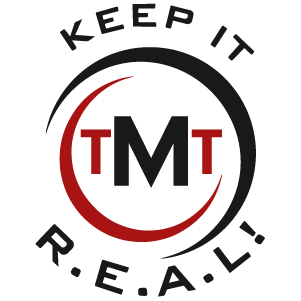Marketing is the sum total of everything you do and every decision you make. It encompasses what you choose to sell or not sell, and all your efforts to attract and retain high-value clients. From hiring the right people to using the right tools and setting competitive prices for your services, everything is marketing. As Ray Kroc, the mastermind behind McDonald’s, emphasized, even clean bathrooms are a part of marketing. If a customer encounters a filthy bathroom, they’re unlikely to return, and that’s a lost opportunity.
For many MSPs, marketing is often an afterthought. They survive on random referrals with no systematic approach to seeking or rewarding them. It’s like playing the Plinko game on “The Price Is Right” — dropping chips and hoping they land in a high-value slot. But such a haphazard strategy won’t sustain a business in the long run.
Subscribe to the TMT YouTube channel here
The Marketing Oil Well Approach
Instead of relying on luck, MSPs need to adopt a systematic approach to marketing. This is where the concept of a “marketing oil well” comes into play. A marketing oil well is a repeatable, process-driven marketing campaign that consistently generates results within an acceptable range of variance.
For example, in my company, we have a consult process for generating leads, booking consultations, and closing sales. This isn’t random; it’s a well-oiled machine. Whether it’s a 10-city tour or a webinar, we know exactly how to get people to register, show up, and take action. These systems and processes ensure consistent results every time.
The Four Big Marketing Systems Every MSP Needs
To transition from random acts of marketing to a structured, reliable approach, MSPs should implement four major marketing systems:
1. Maximizing Client Value
This involves strategies like selling managed recurring revenue (MRR) services, conducting quarterly business reviews (QBRs), and running cross-sell and referral campaigns. The goal is to increase the lifetime value of each client by continually offering more value and encouraging repeat business.
2. Weekly Prospecting
Prospecting should be a weekly activity, not something you do sporadically when you have time. Establish multiple marketing oil wells for consistent lead generation. This could include Google AdWords, referral programs, effective website strategies, social media, retargeting, direct mail campaigns, and trade shows. The key is to have a variety of channels working simultaneously to attract and convert leads.
3. Inbound Lead Management
When a lead comes in, there should be a clear system for capturing, qualifying, following up, and closing the lead. Think of this system like your ticketing system in a PSA tool. Each lead should be tracked, assigned, and followed through to a successful outcome. If an immediate close isn’t possible, elevate the lead within the system to ensure it doesn’t fall through the cracks.
4. Drip Marketing
Not all leads will convert right away, so having a drip marketing system is crucial. This ensures ongoing communication with prospects and existing clients, keeping you top-of-mind and gradually nurturing them towards a sale. A robust drip marketing system can significantly increase your close rates over time.
Building These Systems
Maximizing Client Value
To maximize client value, start by transitioning your services to a Managed Recurring Revenue (MRR) model. Assess your current offerings and create service packages that provide ongoing value, clearly defining the benefits for clients. Educate your clients on the advantages of MRR services, such as predictable billing and proactive support.
Schedule regular Quarterly Business Reviews (QBRs) with each client to discuss IT performance, security status, and upcoming projects. Use these reviews to upsell and cross-sell services. Implement a referral program with clear incentives, and regularly promote it through email newsletters and client communications.
Weekly Prospecting
Prospecting should be a consistent, weekly activity with multiple marketing campaigns running simultaneously. Use Google AdWords to target specific keywords and optimize your website for SEO and conversions. Develop a content calendar for social media, share valuable content, and engage your audience to attract leads. Implement retargeting ads to remind prospects of your services, and create direct mail campaigns to reach potential clients offline. Participate in trade shows and local events to network and generate leads, ensuring you have a follow-up process in place.
Inbound Lead Management
Develop a standardized process for managing inbound leads, starting with capturing leads through forms on your website and social media. Qualify leads based on their needs and timeline, and create a follow-up process that includes regular check-ins and value-added communications. Train your sales team to effectively close leads, providing them with scripts and case studies to aid conversion.
Drip Marketing
Create a content calendar for automated email sequences tailored to different stages of the buyer’s journey. Send regular newsletters with updates, industry news, and helpful tips to keep your audience engaged. Produce valuable content that addresses your prospects’ pain points, and segment your email list to send personalized, relevant messages.
Utilize marketing automation tools to streamline your drip marketing campaigns, track engagement, and segment your audience. Regularly analyze campaign performance, reviewing open rates, click-through rates, and conversions to identify what works and where improvements are needed. Adjust your strategies based on these insights to continuously optimize your marketing efforts.
Transitioning from random marketing acts to structured, systematic approaches will transform your business. By implementing these structured systems, you will build a robust marketing engine that drives consistent growth for your MSP business.
Register For Our Free Webinar To Discover The 4 Proven Marketing Systems That Will Net You 12 To 24 New Clients Every Year


